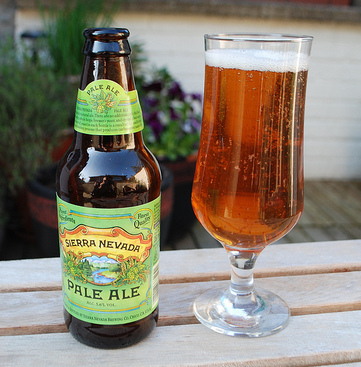Seawall Bar: Enjoy Drinks with Stunning Ocean Sights in Galveston
Seawall Bar: Enjoy Drinks with Stunning Ocean Sights in Galveston
Blog Article
Grasping the Craft of Distillation: a Deep Study Distillery Traditions
Discovering the elaborate art of purification reveals a world soaked in classic traditions that have formed the spirits we take pleasure in today. From the ancient beginnings of distillation methods to the modern development of distillery devices, each action in the process lugs with it a rich tapestry of background and expertise. As we explore the delicate equilibrium of modern-day versus traditional distilling methods and uncover the relevance of vital components, a much deeper understanding emerges of the extensive influence distillery customs carry the spirits we savor.
Origins of Purification Strategies
The growth of purification strategies has an abundant background that traces back to old human beings. The principle of dividing parts based on their various boiling points laid the structure for the innovative purification processes we have today.
The earliest evidence of distillation dates back to around 3000 BC in Mesopotamia, where clay pots were made use of to boil down fragrances and aromatic oils. The Egyptians better progressed these methods, utilizing distillation for medical functions and embalming methods. The Greeks, notably figures like Aristotle and Hippocrates, added to the theoretical understanding of distillation.
Gradually, distillation infect areas like India, China, and the Middle East, each society adding its distinct touch to the craft. The evolution of purification techniques proceeded with the Middle Ages and the Renaissance, eventually causing the diverse array of purification procedures utilized in modern distilleries worldwide.
Advancement of Distillery Devices

With developments in technology and a much deeper understanding of the purification process, modern distilleries currently make use of a selection of advanced devices to produce spirits of the finest quality. Today, distillation tools consists of column stills, reflux stills, and hybrid stills, each made to satisfy details distillation needs. These modern-day stills use better temperature level guideline, enhanced purification accuracy, and higher effectiveness in separating alcohol from pollutants.
In addition to stills, distilleries currently utilize advanced condensers, fermenters, and purification systems to further improve the distillate. The development of distillery tools remains to play a vital function fit the diverse array of spirits available in the marketplace today.
Standard Vs. Modern Distilling Practices
Conversely, modern distilling practices leverage advanced technology and development to improve production processes and enhance consistency. Automated systems, computerized controls, and state-of-the-art equipment make it possible for modern-day distilleries to generate spirits more efficiently and with better accuracy.
While typical distilling techniques are treasured for their heritage and the distinct flavors they produce, modern-day approaches provide advantages in terms of scalability, quality assurance, and sustainability. By including scientific developments and contemporary engineering, distillers can optimize manufacturing, lower waste, and fulfill the demands of today's market extra properly. Eventually, the choice in between typical and contemporary distilling methods frequently depends on the distillery's objectives, values, and target audience.
Trick Components in Distillation Refine
Within the craft of distillation, the choice of key active ingredients plays a crucial duty in figuring out the flavor account and quality of the spirits generated. The main ingredients utilized in the distillation procedure are normally water, yeast, and a fermentable source such as grains, fruits, or sugarcane.
Water is a basic component as it not just waters down the alcohol web content to a palatable degree but also influences the overall mouthfeel and structure of the spirit. The quality and mineral material of the water made use of can substantially influence the end product.
Yeast is another necessary active ingredient that converts the sugars present in the company website fermentable resource into alcohol through the procedure of fermentation. Various strains of yeast can create differing fragrances and flavors, adding to the one-of-a-kind qualities of the spirit.

Effect of Distillery Traditions on Spirits
The impact of historical distillery practices on spirits expands beyond the selection of crucial ingredients, forming the very essence and personality of the final distilled items (Breweries in Galveston Texas). These practices, passed down with generations, play an important duty in defining the one-of-a-kind preference profiles and top qualities that differentiate one spirit from an additional
Distillery traditions include a large range of techniques, from the particular methods made use of in purification to the choice old procedures employed. The use of standard copper pot stills in bourbon production is believed to pass on particular flavors and attributes that are very valued by aficionados. The aging of spirits in oak barrels, a technique deeply rooted in distilling practices, adds to the growth of complex aromas and flavors over time.

Final Thought
Finally, the practices of purification have a rich background that has evolved over time. From the beginnings of purification methods to the modern-day practices, the impact of distillery traditions click reference on spirits is obvious. By recognizing the key active ingredients in the distillation procedure and the development of distillery tools, one can value the craftsmanship and creativity that enters into developing top notch spirits. Distillery customs play an important function in forming the spirits sector and maintaining the heritage of distillation methods.
Throughout the history of purification, the devices made use of in distilleries has undertaken considerable advancement to improve effectiveness and high quality of the distillation procedure.With innovations in modern technology and a deeper understanding of the purification process, contemporary distilleries currently use a range of innovative devices to create spirits of the greatest high quality. Today, distillation tools consists of column stills, reflux stills, and hybrid stills, each designed to provide to particular distillation requirements. From the origins of purification methods to the modern techniques, the effect of distillery traditions on spirits is obvious. Distillery traditions play a vital duty in shaping the spirits sector and protecting the heritage of distillation practices.
Report this page